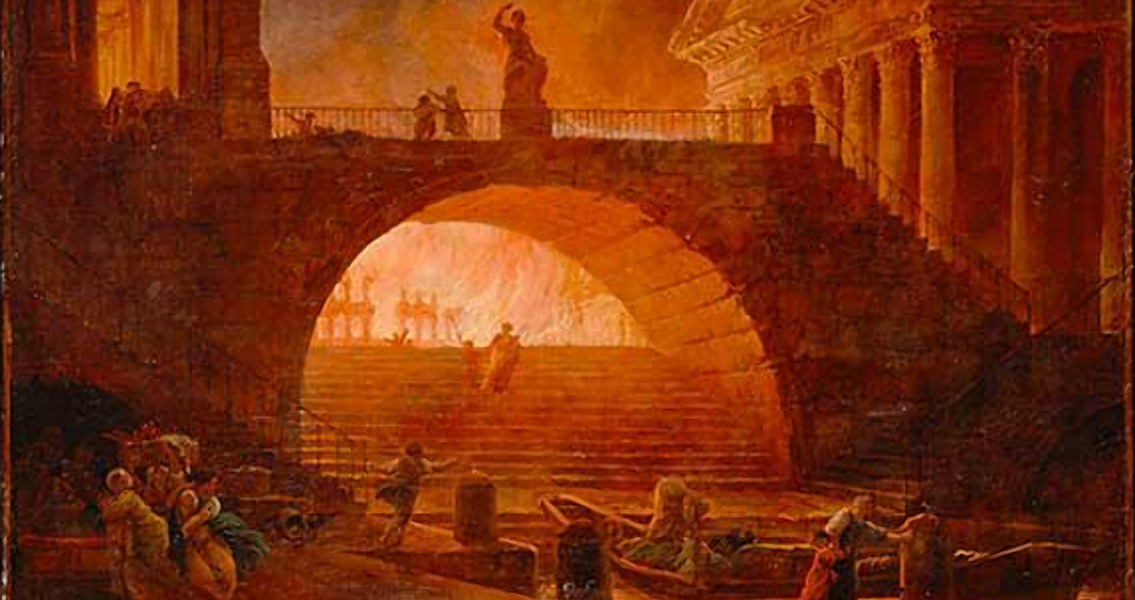<![CDATA[On the night of 18th July, 64 CE, the fire of Rome broke out. Starting in Rome's merchant area, summer winds fanned the fire and quickly spread the flames to the structures of the Imperial City. The fire continued to burn uncontrollably for six days and seven nights. By the time it finally expired, seventy percent of the city had been burnt to the ground. The event has since been remembered as much for its wave of destruction as the infamous emperor Nero's supposed reaction to it, becoming something of an ancient conspiracy theory. Fires in Rome were not unusual, especially in the summer months. The dry, sweltering heat often saw conflagrations start in the city's densely populated slums. It was in such a slum, among the shops lining Rome's great chariot stadium: the Circus Maximus, that the fire broke out. Now remembered as a grandiose city of marble monuments and buildings, it is easy to forget that before the fire much of Rome, from the slums to the imperial centre, was built from wood, a fact which combined with the unusually strong winds to allow the flames to spread so devastatingly. One of the main sources about the fire comes from the Roman historian Tacitus. Born in 56 CE, he was an eye witness to "the most terrible and destructive fire Rome had ever experienced". His depiction of the fire, in his final work, 'The Annals', has shaped many conceptions of the fire, and how Nero reacted to it. He described how Nero sat and merrily played the fiddle while Rome burned, failing to respond in any serious way to the destruction unfolding in his city. He also described gangs of thugs fighting against normal citizens who were trying to stop the fire, using violence and threats of torture to obstruct them. Tacitus's description of the fire is one of the sources of theories that Nero actually conspired to have Rome burnt down, although it should be pointed out that he never explicitly accused Nero of having the fire started - those direct accusations came from a later generation of Roman historians. One of the most spectacular areas of architecture from Nero's reign, the Domus Aurea, was built where houses obliterated by the fire had stood. Those that claim Nero had the fire started point to the fact that it cleared the area of the city he needed to construct the Domus Aurea's series of beautiful pavilions and villas. Nowadays, historians of Rome tend to doubt that Nero had conspired to start the fire. Firstly, they point to accounts that argue that rather than idly playing his fiddle, Nero actually spent the first night of the fire doing his best to organise its containment. There is also evidence that much of the wealthy elite of Rome had begun to disapprove of Nero's increasingly erratic behaviour, particularly his desire to build the Domus Aurea in the city centre. This disgruntled section of society may have spread rumours and stories that Nero had started the fire of Rome, as a way to discredit the controversial emperor. Aside from the destruction caused by the fire of Rome, it is also remembered for the scapegoats whom Nero blamed for its outbreak - the comparatively new religious sect known as Christians. The aftermath actually became one of the most infamous moments in early Christian history. As punishment for the fire Nero, instigated a period of merciless cruelty on followers of the religion, starting a wave of crucifixions and infamously having them fed to the lions at gladiatorial battles. ]]>
Fire Of Rome
